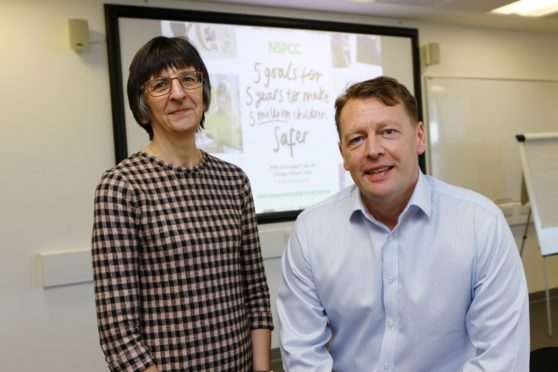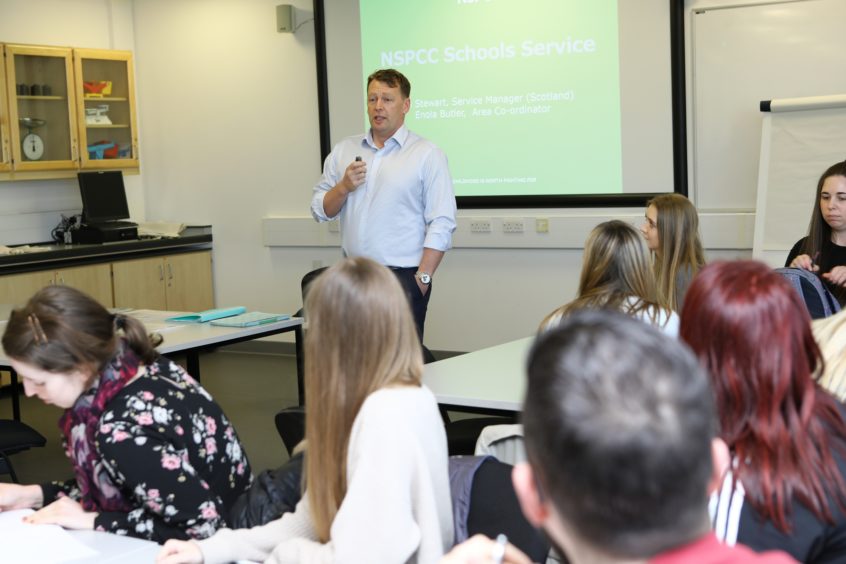Trainee Tayside teachers have been given vital advice on spotting signs of abuse or neglect which will affect at least two youngsters in every classroom they teach.
In a key Dundee education conference, NSPCC experts explained the Speak Out Stay Safe programme which takes the message directly to schoolchildren to help them remain protected.
The Angus achievement also signalled 100% completion of the service for schools in Dundee, Aberdeen City, Aberdeenshire, Moray and Shetland.
At Dundee University’s first PGDE (Professional Graduate Diploma in Education) conference, around 60 trainee teachers were told about charity research revealing, on average, at least two children in every primary school classroom have suffered some form of abuse or neglect.
Alan Stewart, schools service manager for NSPCC Scotland, said: “It is so important that children understand the different forms of abuse, both physical and emotional – that they can spot the signs, know they have the right to be protected and where to turn if it is happening to them or someone else.
“Today’s event is such a valuable opportunity to work alongside our colleagues in education and help make teachers of the future aware of the service we provide, as well as giving them some insight into how we talk to children about abuse in a way that they can understand.”
Dundee University School of Education and Social Work lecturer, Linda Lapere said: “We work with our initial teacher education students to ensure that their classrooms are inclusive, caring environments.”
Student Miriam Donald, 23, said: “The main point that I have taken away is that this is something that teachers have to be the agent of change for, and working with organisations such as NSPCC is crucial to ensuring effective collaborative working and making sure we are getting it right for every child.
“Teachers can be among the first people to identify signs that a child’s welfare is at risk.
“Visits from charities such as the NSPCC are hugely helpful in empowering the teachers of tomorrow with the knowledge and skills they need to ensure that children remain safe and happy in the classroom and at home.”










